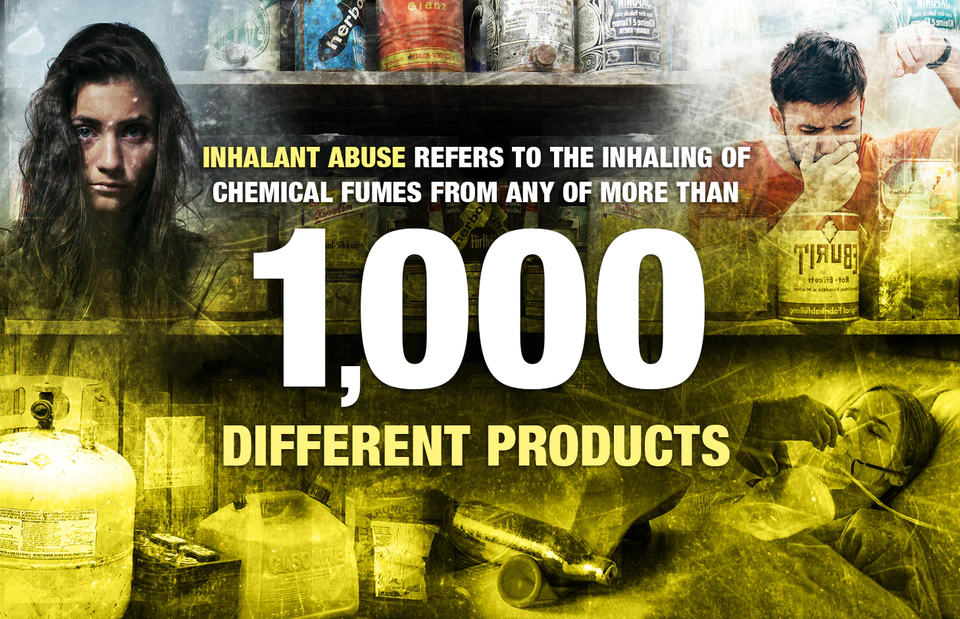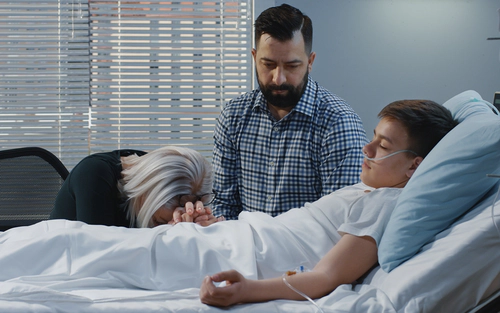Inhalant Addiction

Find more information about inhalant and inhalant addiction with professionally reviewed up-to-date articles. Getting informed is the first step in overcoming inhalant addiction.
More
Inhalants are an extremely dangerous, potentially lethal class of drugs which are consumed by inhaling fumes from any of more than 1,000 different common household products. The class of drug also includes nitrous oxide, ether and other chemicals used in medical procedures. The effect for all of these is similar, producing a drunken, out-of-control sensation. When substances are inhaled which are not intended for use in humans, or if nitrous oxide is used in large quantities, death can occur.

Find more information about inhalant and inhalant addiction with professionally reviewed up-to-date articles. Getting informed is the first step in overcoming inhalant addiction.
More
Many common household chemicals can be concentrated and abused so it's no wonder that younger Americans who might not have easy access to illicit drugs are likely to try inhalents.
More
Stay informed on the latest news, trends and statistics on inhalant addiction and inhalant-related news.
MoreOne of the most tragic aspects of this type of drug abuse is that it is often engaged in by adolescents, in large part because these substances are so accessible. The average home has dozens or even hundreds of these substances readily available.1
It would be difficult to keep every one of these substances out of a young person’s reach. For that reason, thorough education on the dangers of inhalants is necessary to prevent harm.
Some people like the euphoria and loss of inhibitions that result from inhalant abuse. There can be a rush of excitement or exhilaration as well.
Less pleasant are the unwanted effects:
Because inhalants are toxic chemicals, the physical and mental effects of abuse can be severe.2 They include heart damage, addiction, brain degeneration, hearing loss, muscle spasms and liver damage. Many of these types of damage are permanent. It may be difficult for a person who has been addicted to these substances to have simple conversations or learn new things. They may also have poor memories.
Tragically, it is possible to die the very first time that inhalants are abused. Inhalant abuse can suffocate a person, or stop breathing because of the effect of the chemicals on their lungs. If they go unconscious and vomit, they may choke on their own vomit. Cardiac arrest is also possible.
When it is difficult to determine if someone is abusing drugs, sometimes the drug use paraphernalia they leave behind can be identified. In the case of inhalants, these items may be found:
With the use of these and other items, a person can concentrate the fumes from chemical products and inhale them.3
Among Americans aged 12 and older, 2.4 million abused an inhalant in the last year.3 Unlike other types of drug abuse, the proportion of use is highest among those aged 12 to 17—nearly 700,000 of these youth abused an inhalant in the last year. Rates of use drop as Americans age.
Sources
DEA. “Drugs of Abuse.” Drug Enforcement Agency, 2017. DEA Publication (PDF) ↩︎
NIDA. “Inhalants Research Report.” National Institute on Drug Abuse, 2011. NIDA Report ↩︎
NIDA. “Inhalants DrugFacts.” National Institute on Drug Abuse, 2020. NIDA Article ↩︎ ↩︎